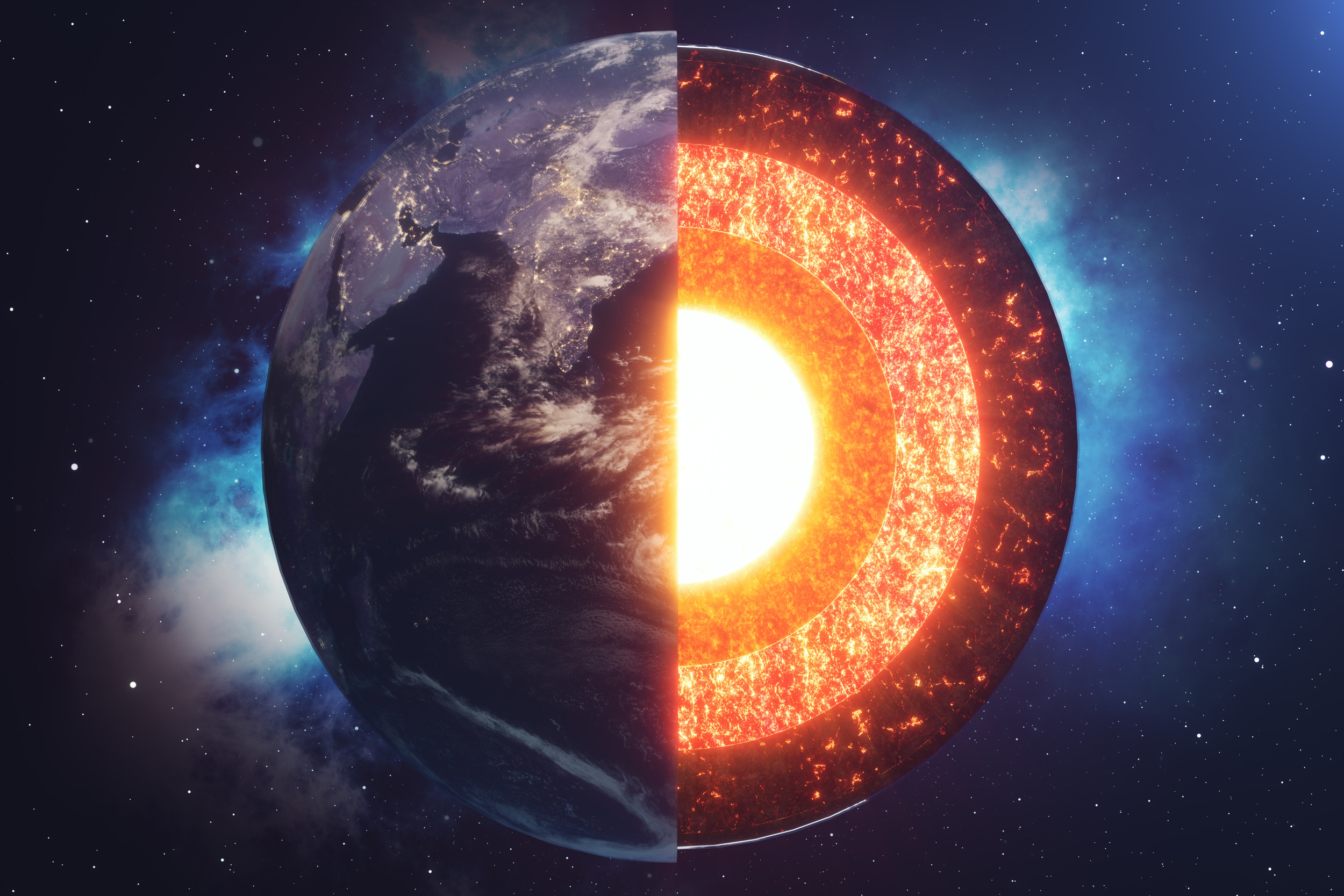Physicists have come closer to solving one of the biggest mysteries in geophysics: how the Earth powers its magnetic field.
The team, from the University of Texas at Austin and collaborators at Sichuan and Nanjing Universities in China, believe that their discovery provides a fundamental physical mechanism to help explain the surprisingly “soft” physical properties of the Earth’s dense inner core.
Roughly 1,800 miles beneath the Earth’s crust lies a ball-shaped core made largely of the metals iron and nickel. The core is super-hot, ranging from about 8,000 to 10,800 degrees Fahrenheit, and is made up of two parts: the liquid outer core, and the dense, solid inner core.
Movement of iron atoms in this core is known to power the Earth’s magnetic field, which is thought to play an important role in making the planet habitable. Not only is it responsible for setting up compass directions, but it also acts of a shield around the planet, deflecting powerful radiation from solar storms.
The Earth’s magnetic field is mostly generated in the liquid outer core by its sea of swirling metal, but the role of the solid inner core in this so-called geodynamo has so far remained a mystery.
“Earth’s core is under such extreme pressures of ~ 3.5 Mbar (3.5 millions of atmospheric pressure), so one would think that iron atoms are so confined to their positions and there’s not much wiggle room for them to move,” one of the leading authors on the study, Jung-Fu Lin, a professor at the University of Texas Jackson School of Geosciences, told Newsweek. “What we found was totally against this traditional view.”
By recreating a miniature model of the Earth’s inner core in the lab, the team was able to predict the properties and motion of these iron atoms. And what the scientists found was very unusual: rather than staying stationary in their solid lattice, the atoms were moving, fast.
“I was like ‘Wow. We just found the answer to the Holy Grail in geophysics,'” Lin said.
“The iron atoms were wiggling their ways so fast that they moved to other positions in a split second.”
This movement—known in physics as collective motion—is akin to guests at a dinner party swapping seats. The overall structure of the table stays the same, despite this internal movement.
“[This collective motion] is due to the fact that iron atoms are at conditions very close to melting so much as that they look like a solid but behave more like a liquid,” Lin said. “Indeed, it happens in many metals near melting and is a relatively well-understood physical phenomenon in condensed-matter physics. But it is not known to occur in the deep planetary interiors. We collaborated with physicists on this project, and they were like they knew this coming.”
To confirm their models, the team also compared its results with seismic-wave studies of the Earth’s inner core. “We also conducted laboratory shock-wave experiments to measure the velocities of iron atoms at extreme pressure and temperature where collective motion is predicted to occur,” Lin said. “All these further confirm the prediction for the occurrence of collective motion in the iron heart of the planet.”
The team’s results, published in the journal PNAS on October 2, go some way to explain the mysteriously “soft” properties of the Earth’s inner core, as well as offering potential insights into the generation of heat at the planet’s center. The study also augments our understanding of the processes that power the generation of the Earth’s magnetic field, and potentially the inner workings of other planets inside and outside of our solar system.
“The discovery implies that the same physics in collective motion also occurs in other planetary interiors such as Mars and exoplanetary interiors,” Lin said. “Exoplanets are subject to even extreme pressure and temperature conditions so one would need to extend the research conditions to see if this happens. This will help us understand planetary systems in general.”

